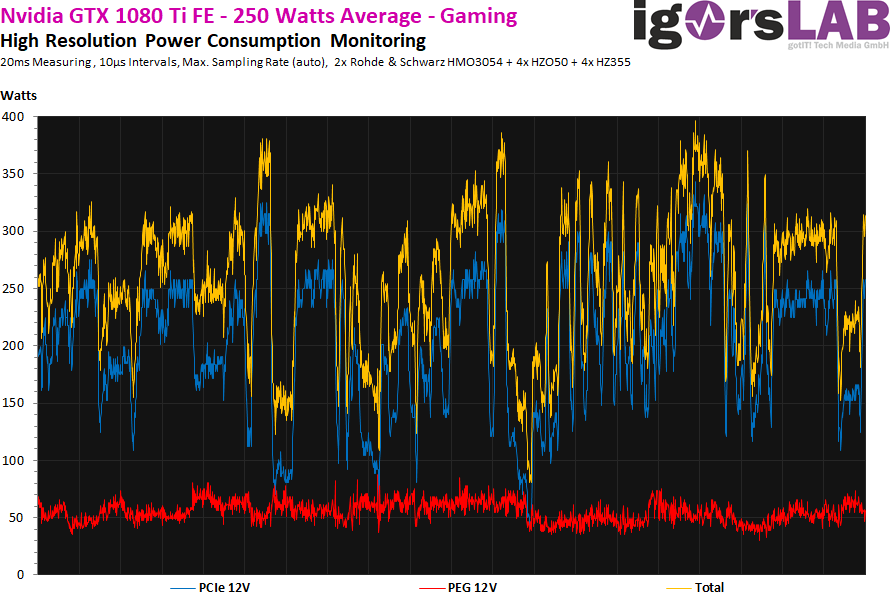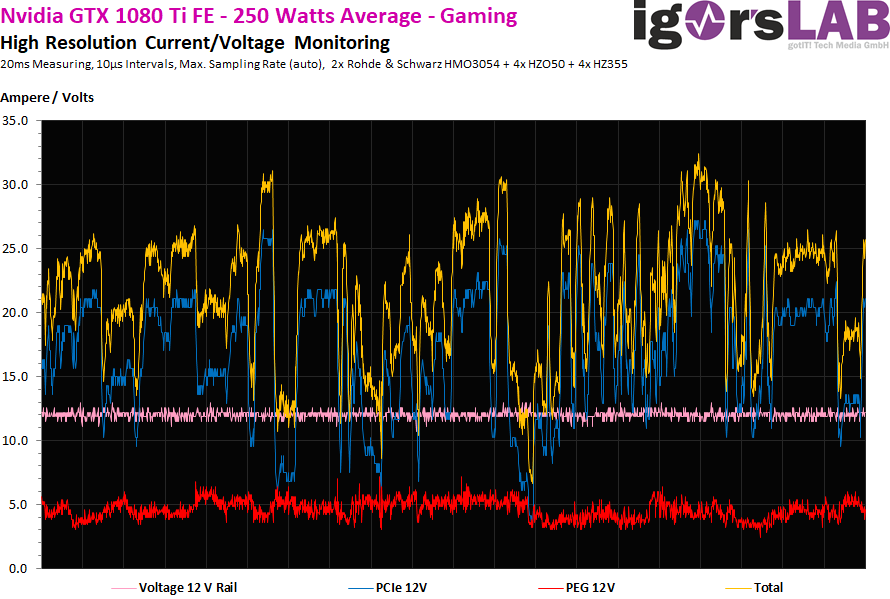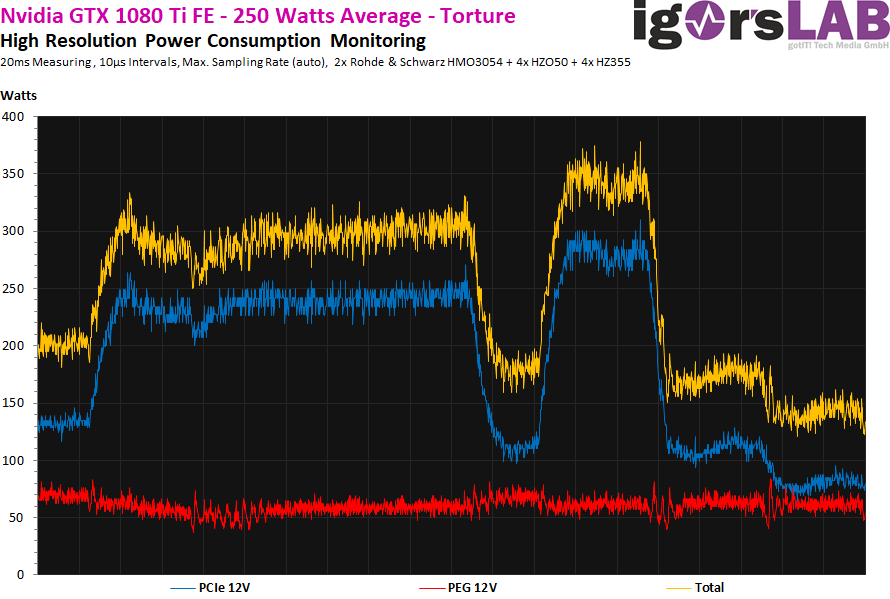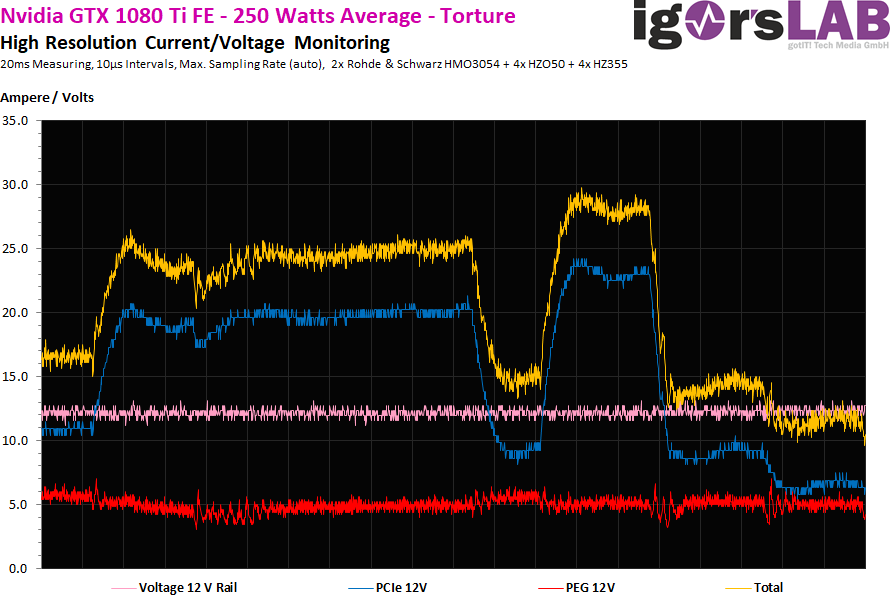Nvidia’s Pascal chips were and are already much more restrained in the load changes than the previous cards with Kepler. And yet we also learn something from these measurements. What exactly, I’ll show you now.
Measurements under maximum game load
Even though it is also around 250 watts on average, the absolute peaks are more than 40 watts below those of the Radeon RX Vega64. But this is also due to the fact that the image of spikes and valleys completely differs. You can see very nicely that Boost downgrades much finer than Power Tune, whereby the power supply of the Founders Edition is not even really optimal and leaves some potential behind.
In this loop, there is a maximum of 360 watts over 1.1 ms that cause a sensation. as well as the approx. 375 watts within approx. 0.4 ms. You could also measure peaks up to well over 400 watts if you increased the resolution by a factor of 10. Only because of the short duration, no one is interested in this anymore, which is why I leave it out here. Every power supply with the left has to do this, whether brand or not.

The currents produce the same picture, so I don’t want to repeat myself at this point. However, if you remember what was happening with your finger and the hot stovetop, you can also see why Vega is a little more difficult to cool, because especially the voltage converters have a little more to do.

Measurements during the stress test
The intervals in the stress test are now suddenly much longer, because the power estimation can no longer play its potential together with Boost. Where Pascal can buy the cutting edge in gaming with a clever and much faster forecast, there is now some sand in the gearbox at continuous load. It is then also about 9 ms, which has such a load tip of approx. 300 watts. The 345 watts over 2.2 ms are almost at Vega level.
In the end, Nvidia only cooks with water and before Furmark all of a sudden everyone is the same again. The possible construction site at Vegas efficiency is therefore not the clock gradation, because it is ok, but the frequency and speed with which an adjustment is foreseen and then carried out. Driver or firmware? AMD keeps itself covered as usual. But we are with Pascal at the time.

Here, too, the power consumption is based on the measured currents sometimes the applied voltage. If you look at both individually, it looks a bit better than with the RX Vega64, but also not for worlds better.

Intermediate conclusion
Pascal is certainly one visible step ahead of the RX Vega in the same power consumption class when it comes to the load and its peaks in games. Under constant loads, this advantage is thus lost again. What must be taken into account when selecting and designing a power supply is also a functional secondary side, which is at least approx. 350 watts over 10 ms and 400 watts at a millisecond to be sure. This is slightly less than with the RX Vega, but also not so much better.

































Kommentieren